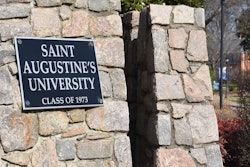Why has the Jena 6 situation garnered so much attention and outrage? Many of us, as people of color, feel responsible and compelled to stand up for our brethren in small town America who are resigned to the persistent unjust treatment of African- Americans.
As a college professor, I try to discuss current events and relate them to the topics being discussed in the class readings. As one who teaches juvenile justice at an HBCU, the topic of race, males and disproportionate minority contact in the juvenile justice system and the larger criminal justice system is one that is often discussed in class. The “Jena 6” case is no exception and indeed has received a great deal of attention among the student body on the North Carolina Central University campus to include forums and a planned trip this week in support of the Jena 6.
However, as teachers often do, I try to get students to think critically about the current issues that are making news. As it relates to the Jena 6, I asked students to consider how this situation could have escalated to such a degree because hanging nooses as a display of overt racism has always been part of the ugliness of our society? So what is the context of our emotions, as it relates to Jena 6? People of color have to deal with the ignorance of others on a daily basis, so why is this situation getting the coverage it’s getting and why the reaction from students, the media and others? Could the context of our emotions be that it is heartening to see images of these poor Black people in this small town helpless and resigned to the fate of these young people, as displayed by the media? So what makes Jena, La., different?
Is it the actual act of hanging nooses on trees something that only occurs in small town America? Well no, as the recent University of Maryland, College Park situation shows. There was a recent incident where a noose was found hanging from a tree in front of an area on campus where both Black students and faculty are known to frequent. This is another example of the countless displays that occur yearly and most do not get any coverage past the local media and some special interest media.
So what is it? I think in some way we (that is, people of color) feel responsible for people of color who live in small town America because many of us come from that environment. Would the situation have been different if the people in the area felt there was another way out? I saw a resident of Jena being interviewed on television last week and her sentiment was “this is how we (Blacks) are treated in Jena.” She seemed resigned to her fate and that of all the people of color in Jena.
I wondered what could be happening in this place where this person feels like she has no choice but to accept the status quo in her town. Is it that people of color in small town America are not equipped to handle situations such as this, because the people of color in these areas have been oppressed by their systems of justice? Also, do the people of color in these areas feel they do not have an opportunity to seek justice in the same way as Whites?
I will not even begin to think I know the answers to these questions because I have never been to Jena, La.; however, I do understand the context of that environment. What I do know is people of color are often times outside of the political processes that elect officials to positions of prosecutor, judgeship, county sheriff and school board member. This is the case, despite the fact that people of color make up a substantial number of eligible voters in these areas.
As people of color who come from small and large town America, we must show how deliberate actions such as voting, attending city council and school board meetings, etc. can make a difference in their towns, because the only way to make substantial change in the way these cities are run is to be inside the group or organization where change is desired. Groups that are considered change agents in the African-American community should help the people of color in Jena and others in rural communities to get elected to offices where they can make a difference in the way their communities are governed.
Although there are other means to effect change in communities, it is through the political process where a great deal of reform has taken place in the last 40 years that has benefited people of color in the United States regardless of where one may live.
In conclusion, when I first heard about the Jena 6, I remembered thinking “Oh God, not another situation.” I felt helpless to react in this situation. I also wonder, sometimes, does protesting really engender change? Well, as of Friday the adult case against Mychal Bell, one of the Jena 6, was dropped (although the prosecutor vows to appeal the court decision that threw out Bell’s conviction or charge him as a juvenile) and I can’t help to think that the planned march onto Jena this week by thousands of people and the national media coverage this situation has received had something to do with it. What will be interesting to witness is how our community reacts the next time something like this happens, as there is assured to be a next time.
– Dr. Jessica S. D. Ganao, is a Professor in the Department of Criminal Justice at North Carolina Central University.
There are currently 3 comments on this story.
Click here to post a comment
© Copyright 2005 by DiverseEducation.com















